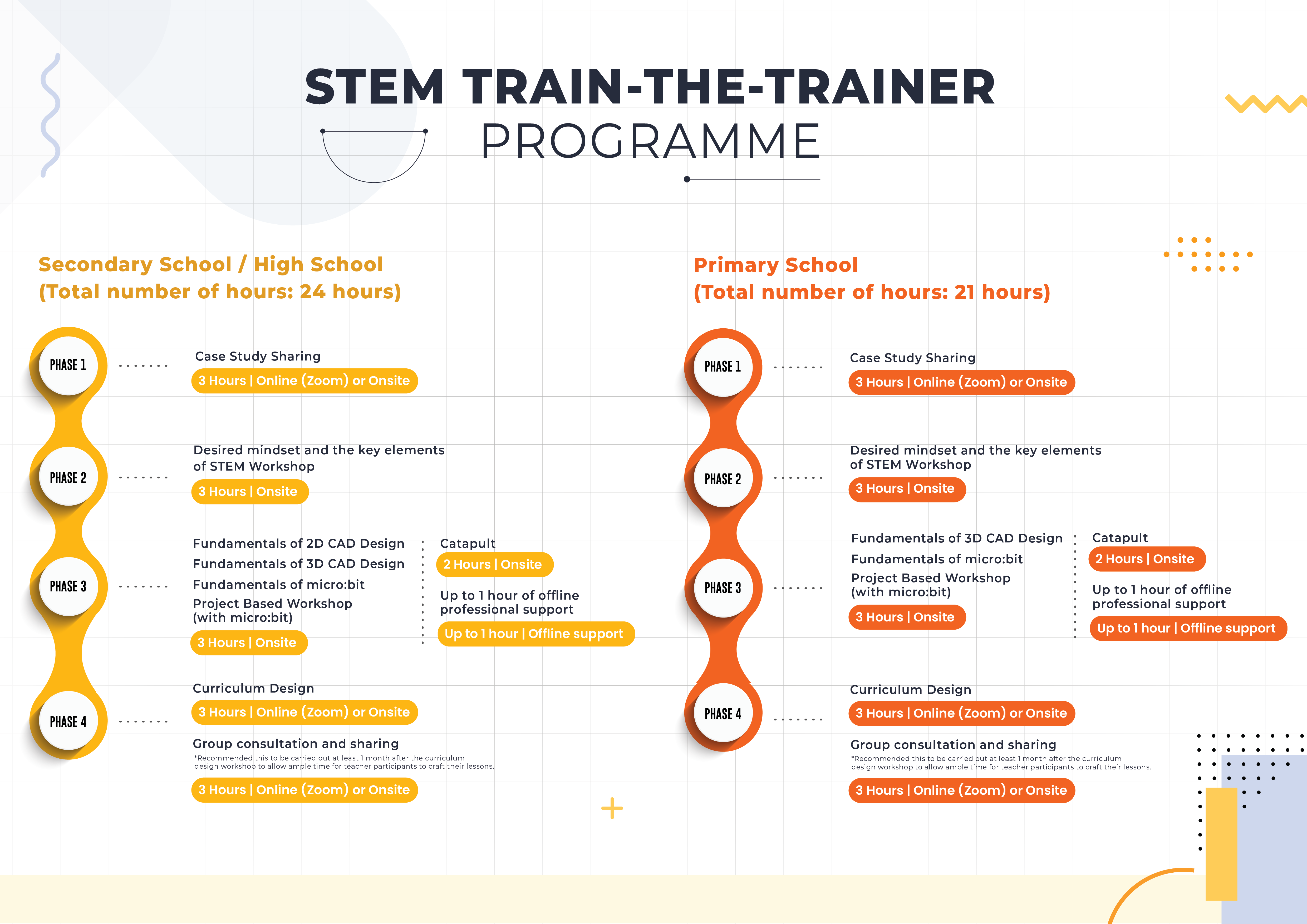Background / The need for programme
The world we live in and the challenges we face are increasingly volatile, uncertain, complex, and ambiguous. Such challenges that we and our children will face include, but are not limited to, climate change and disruptions caused by technology (e.g., brought by continued development and integration of artificial intelligence and machine learning in our daily lives). These problems are often interlinked, and the solution is often education.
Education plays an essential role in bring about significant and meaningful change in societies. Teachers, functioning as catalysts for change, will be central in preparing students to not only over challenges of the future but to excel and thrive. This will involve new pedagogies, strategies, and curricula that provides tiered, coherent learning that provides opportunities for hands-on learning and relevant real-world applications of knowledge and skills.
In applied STEM courses, teachers must find new avenues to integrate and utilise science, technology, engineering and mathematics skills in new and different ways, helping to promote a more thorough understanding of their applications. In addition, applied STEM courses promote the development of new skills such as reasoning, logic, and problem solving.
Programme Description
A teachers’ STEM professional development programme targeting teachers teaching grade 5-8. Familiarisation of what is STEM, how STEM curriculum has been implemented and to equip teachers with relevant STEM skills and knowledge for the implementation of country-specific STEM curriculum in their own school.
This is to equip the teachers with the relevant STEM skills and knowledge and to guide the teachers through hands-on activities, which finally leads to the crafting of their unique STEM curriculum suitable for their school. This programme is developed in 4 main phases:
Phase I | Setting the meaning - the why of doing STEM (presentation-based)
There would be a briefing and overview sharing of the STEM Professional Development journey that the educators would be going through. Through sharing on how STEM education is implemented in Singapore, educators would be able to visualise and crystallise their vision on STEM education implementation in their respective schools.
Phase II | Setting the meaning - the what of doing STEM (presentation-based)
The main aim of this phase is to relay the desired mind-set and the key elements required for a STEM workshop. Technology and platform used may keep changing (eg. micro:bits, arduino) but the STEM mind-set and the key elements of how a STEM workshop should remain largely similar. Through this workshop, teachers would be appreciating the key elements and have a deeper understanding on the desired mind-set of a STEM workshop.
Phase III | Inspiring the teacher with possibilities (workshop-based)
Through our experiences providing consultation for educators, we noted that the technical skills that the teachers are lacking confidence in. We have identified 3 essential skills (build, code, and fabricate) that would be serving as fundamental skills to create diversified range of prototypes as solutions for real world problems. Moreover, with the educators equipped with these skills, it could help them to explore more advanced kills and apply the relevant tools for their STEM lessons development in future.
Phase IV | Empowering the teachers to create (mentor-based)
This is the last phase of the STEM Professional Development journey where the educators get to apply what they have learnt from the previous phases and start to create their own STEM curriculum that is suitable for their schools. There would be advice given by the STEM curriculum experts and also educators would get to listen to what other educators have crafted for their STEM curriculum.







